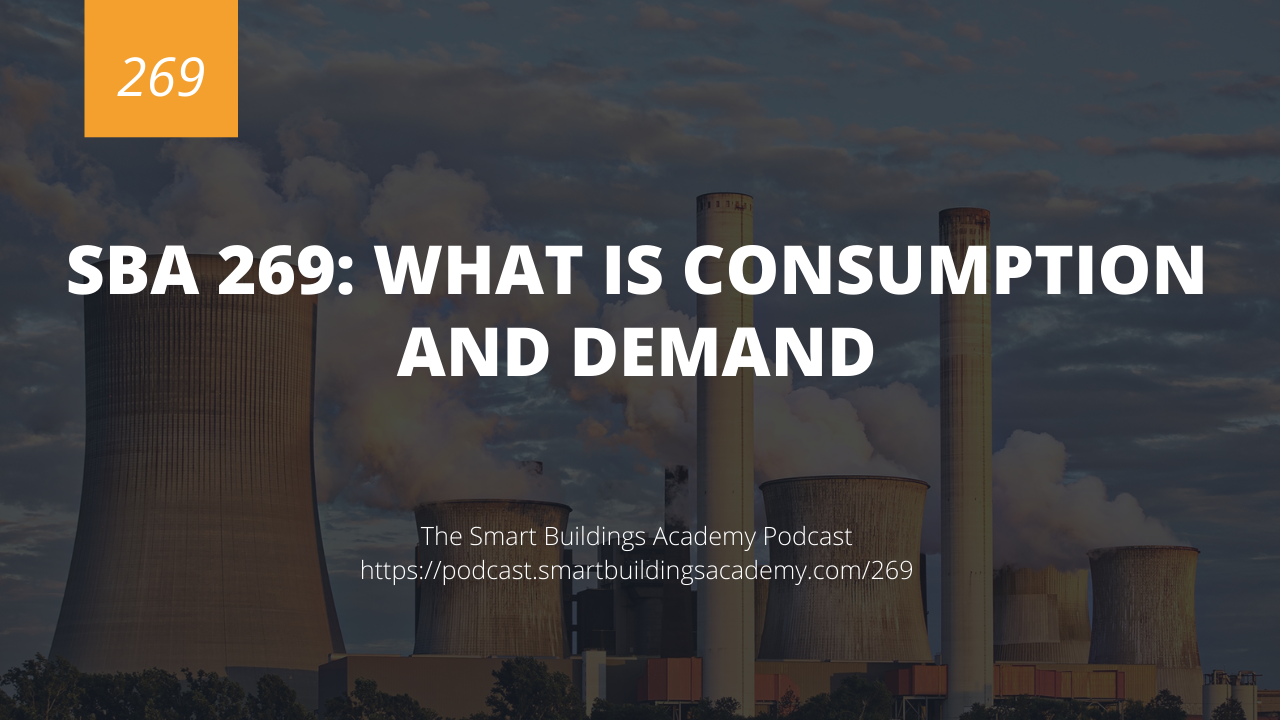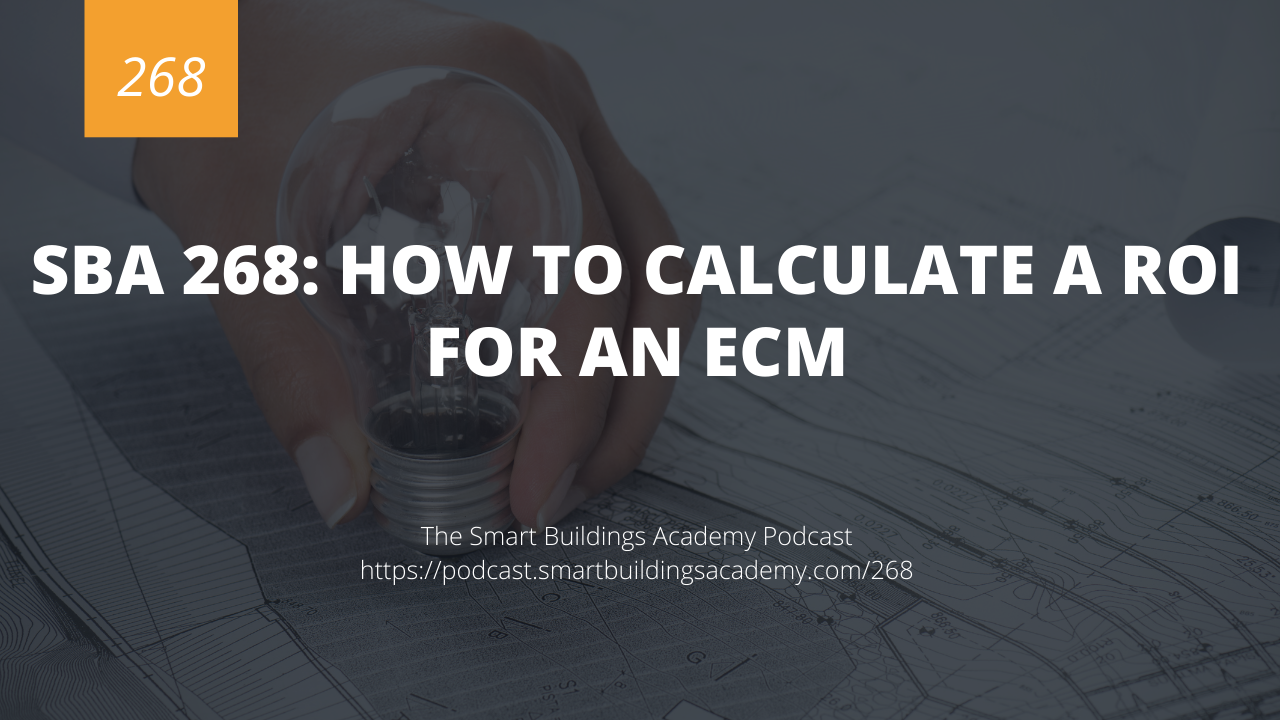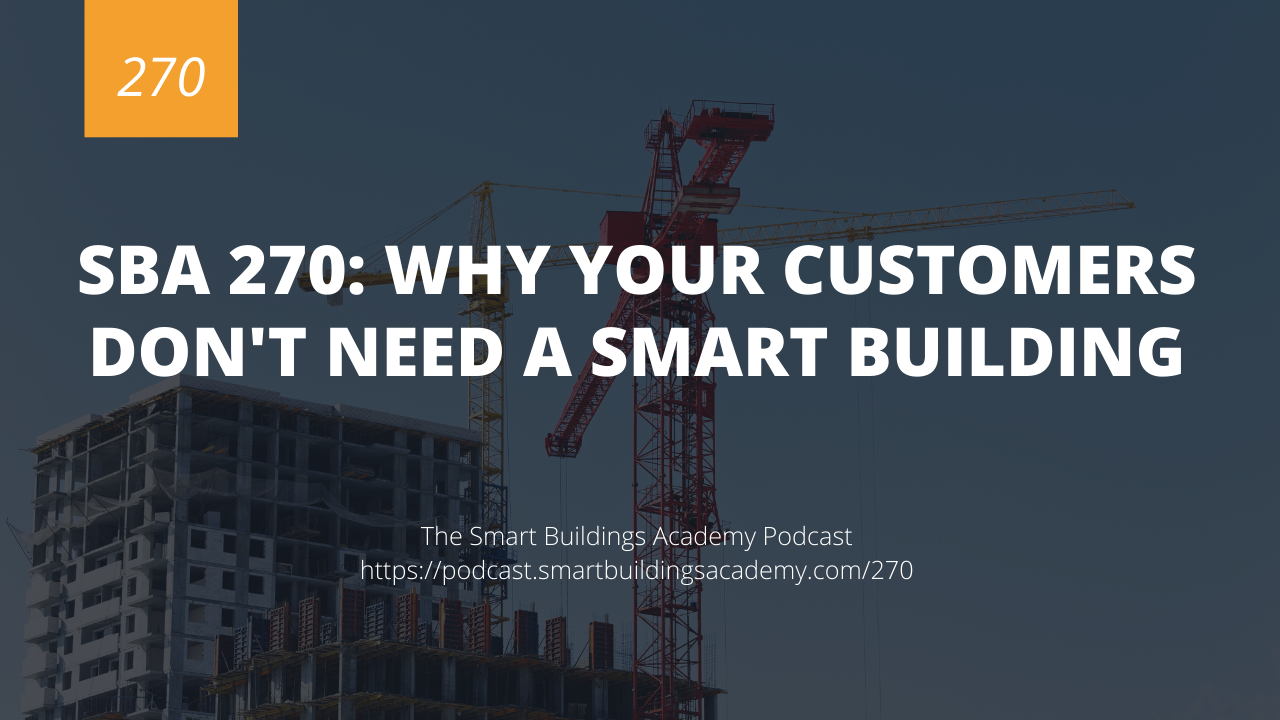In this episode we discuss what demand and consumption are and how these concepts apply to building automation.
Click here to download or listen to this episode now.
Resources mentioned in this episode


Transcript
Phil Zito 0:00
This is the smart buildings Academy podcast with Phil Zito Episode 269. Hey folks, Phil Zito here and welcome to Episode 269 of the smart buildings Academy podcast. In this episode, we are going to continue talking about energy and we are going to dive into demand and consumption. So I'm going to keep this episode brief because there's, I mean, there is a lot to this. But as far as most of you in the building automation space, are interested, there's only so much to this concept. Alright, so first off, let's start with demand. And what that is, if you have ever heard the term peak demand, and you didn't really understand what peak demand meant, basically, peak demand is the highest average demand, typically in a 15 minute interval that you are experiencing, typically during a 12 month billing cycle. And it's a rolling 12 months. So typically what will happen. And this actually was one of my biggest concerns when people started to reopen buildings, is the fact that when you turn on a motor, it draws a lot more demand than if you're just running it normally. So if you start a motor from stop, to start, that actually takes more demand than just going and running the motor itself. So my fear was coming out of COVID that everyone would start opening their buildings and turning on everything at once and would create these new artificial peak demands that didn't really reflect how their building operated. Now, why do I tell you this little story, it's to illustrate what demand is demand is the capacity is the required capacity that the utility must provide to building operators in order for them to be able to have the power they need to run their buildings. Okay, so we can understand what demand means, right? So the thing with demand is that, once you set it, that is what you're going to be paying regardless of if you actually use that capacity or not. Now there are things like variable demand are things like ratchet clauses and variety of other energy concepts that aren't necessarily totally pertinent to building automation professionals. But if you hear the terms, basically, variable demand charges is, you know, your demand rate could vary depending on the time of the year ratchet clauses are like when you exceed by a certain percent, or by a certain amount, that's when you ratchet it up to a higher tier demand. Not necessarily if you just hit a momentary peak. So that is demand. And it's also important for us to understand it if we live in any area that has what's called load shedding. And the whole purpose of load shedding is as you get into design day scenarios. So remember, design days are either on the cold side or the hot side. And it's basically the designed capacity of the system. So once you exceed that design capacity, the system may be able to do that. But it may draw more demand, then it typically did in the past, especially if you have electric heat, or if you're relying largely on like air cooled chillers or things like that, that really draw a lot of electrical demand. So what do you do in those kind of scenarios? Well, one scenario would be that you would load shed to reduce that demand. So you don't go into a peak demand scenario and oughtred artificially raise your demand rate. Another thing is that some utilities will actually pay you to reduce your demand and your consumption. That way, they don't have to worry so much about your effect on the grid. And you'll see this in a lot of like West Coast states, some some northeast states, we're talking specifically about United States here. That being said, demand is only one piece of the puzzle consumption
Phil Zito 4:18
is the other piece of the puzzle. Now demand ensures that you have the capacity to consume the amount of power you need, you know, a common example would be like a 60 watt light bulb, right? I mean, we don't really see these anymore, we tend to see like 10 to 15 white watt light bulbs now that we use LEDs almost extensively. But you know, in the olden days, 60 watt light bulb was kind of the standard. And whether you know that light bulb is on or off, it still requires 60 watts to run right? When it's on it's using it's consuming 60 watts. When it's off. It's not consuming anything It's not consuming, but in order for it to go on and consume, it requires 60 watts. So basically, what you do to come up with demand is you add up what your demand is, your your consumption demand for all of your units, you also have to factor in, like I mentioned, when you turn on motors and things like that you've got, I think it's braking amps, if I remember correctly, which usually is like four acts, the demand, that would be on a normally running motor. Alright, that all being said, Now we switch over to consumption. So consumption, this is what we typically meter we don't typically meet or demand we meet or consumption, and we're going to get into something called power factor and power factor correction in just a second. But we meter consumption and consumption is what our systems are using, as they run throughout the day. Now a common misunderstanding is that we can reduce consumption, and that is going to reduce demand. But remember what we said about how in order to turn on your units, that requires a certain amount of demand, and sometimes the utility will calculate that in, sometimes they won't. Also, when we're running our systems, outside of energy efficiency modes, they require a certain amount of demand. So just because you can reduce consumption in an energy efficiency mode does not mean you're never going to run the system in a non energy efficiency mode, like a full load mode, and still be back at that peak demand peak consumption. Alright, I want to be clear on that, because a lot of people misunderstand, they're like, Oh, I implemented these vfds, who I implemented this reset, who I implemented this, you know, demand control ventilation strategy, when they go and implement these, and they're efficient in the shoulder months, but they get into peak months, you know, where we're at design day scenarios. And they're just using the system at full capacity like they would have normally, and they're really not reducing command or reducing demand, or consumption. So I want to be clear on that. Now, we also have this thing called power factor. And power factor is an important concept for us to understand. So I'm going to try to explain this in a pretty simple scenario. But this is kind of a complex topic. And it's one of those things that is just much easier if you visualize it. And, you know, here we go. Let me let me kind of take you through this. So imagine you got a building, right? And the building is using, we're gonna say 100 kilowatts of demand, right? But the meter at the incoming side of the building is 125. Well, if we take 100, and we divide it by 125, we find out that we're actually only utilizing 80% of the power that's coming in. And so that means that 20% is wasted. And that creates all sorts of issues. So there's many ways that we can fix this right? We can go and utilize capacitors, we can utilize variety of things, I don't really want to turn this into a fixing power factor podcast, because then we're going to be like going way out in left field. But if you all want to know about how to fix power factor, how to correct that, leave it in the comments, and we'll do that in a future podcast. Suffice to say, and this is important, and the easiest way I like to explain this to building automation, folks, is you got 100 va transformer, right? It's got 100 va capacity. But yet, if you add up your loads, like maybe you've got four v v boxes running with electric heat, you add up your loads, and you find out man at at those four vv boxes, and they're each using 20. Va, I'm at full capacity, I'm draining that transformer,
Phil Zito 9:12
well, most likely there's a power factor. Now it's not usually that drastic, you don't usually have a power factor of 20% between the secondary transformer and your vv boxes. That being said, there is some line loss there is loss just due to what's going on. And it feels like if it feels like I'm talking around this I am purposely because I'm trying to keep it high level. But there is some line loss there is some loss just in the inductive motors if you're using fan powered the resistive aspects of electric heat and things like that. And because of that, we lose power efficiency. So to wrap this all up to kind of put a bow on it, right we have demand and demand is measured on the incoming side of the building. And the thing is, is that demand does not necessarily reflect actual consumption. Because as we learned, you may be supplying 200 or 125 kilowatts, but you may require, or you may only be using 100 kilowatts. And because of that, you actually have a power factor of 80%. And so you're paying for 25 kilowatts that you can't use. Now, that's not such a big deal. But if you extrapolate that to 1000s, or 10s, of 1000s, of kilowatts, that can actually be quite expensive, which is why folks look into power factor correction, and addressing those issues. That way. They're efficiently consuming and distributing the power throughout the buildings, right. And the next thing I want us to make sure we wrap our heads around is the consumption side of things, right. So we got the demand, and we got the consumption and consumption is only occurring when the devices are actually active. So demand is always required, because at any time, the utility needs to be able to provide and meet that consumption requirement. That being said, consumption is something that isn't always occurring. So I see a lot of folks who try to solve problems by going and reducing their consumption, right, they try to go and reduce their consumption, but their demand stays high and potentially is a large part of their bill. So it's a balancing act, right? If your consumption is truly a large part of your utility bill, like you're a 24 seven facility, then finding ways to make your consumption more efficient, or make your power factor more efficient or good strategies. That being said, if you have a variable consumption, like sometimes you're using the building, sometimes you're not, or you don't use the building that often, then finding ways to reduce your demand is probably going to be more beneficial to you. So just balance that out, understand what those two concepts are. My hope is that at the end of this podcast, you have a good understanding at the surface level of consumption and demand, you have a good understanding of power factor. And if you'd like me to dive deeper into these topics and do a more extensive podcast on this, please let me know. I'd love to do that for you. You just need to go in the comments and let me know and you could do that at podcast at smart buildings academy.com Ford slash 269 once again, that is podcast at smart buildings Academy comm Ford slash 269. Thanks a ton and take care





